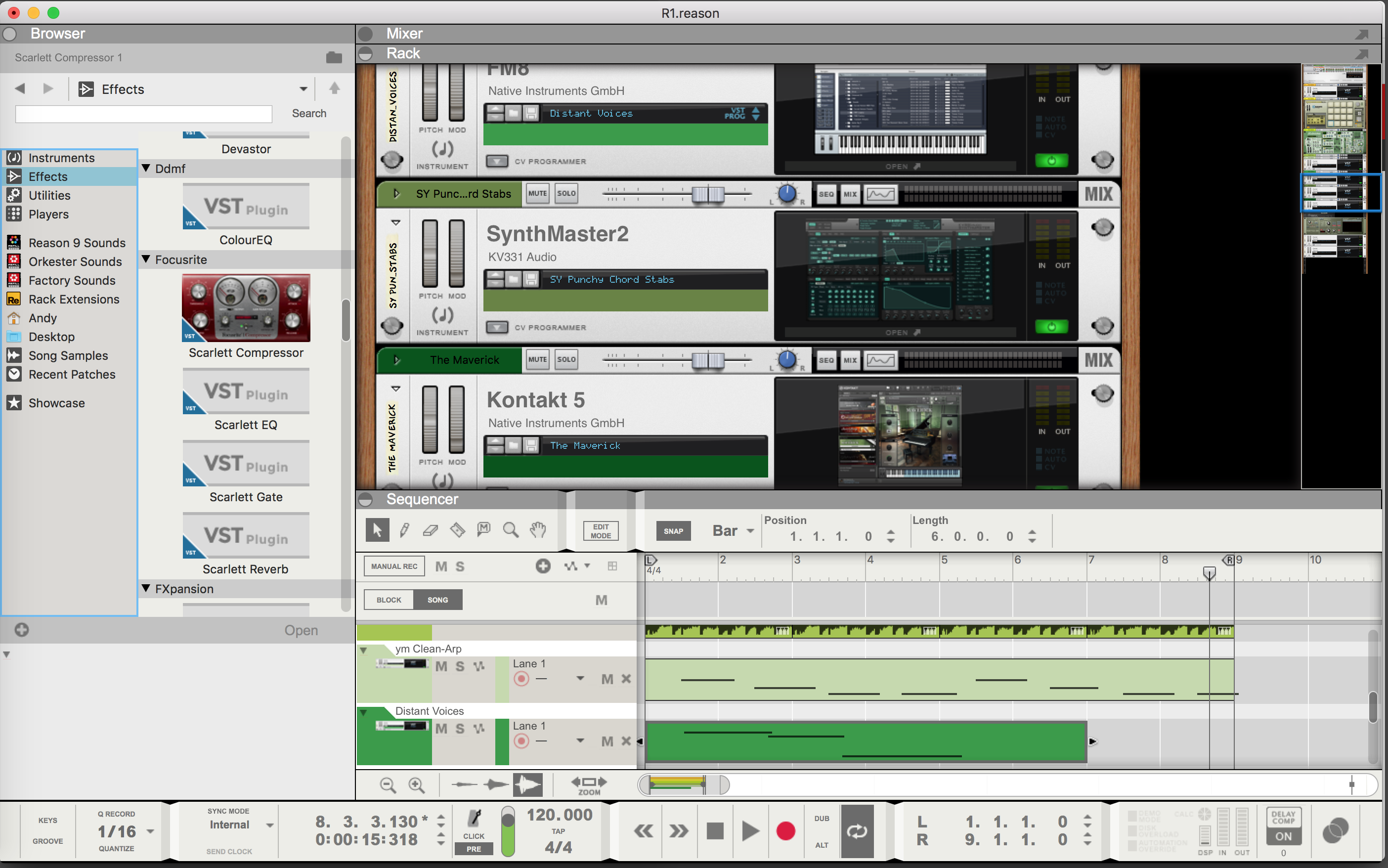

Small up and down arrows will also appear in the name area allowing you to step through presets.
Kontakt 5 in reason 9.5 Patch#
Instead, if the plug-in uses the standard VST bank and preset format for storing patches, you can click on the patch name display to the right and get a pop-up list of patches.


This may be confusing as the plug-in itself will usually have its own presets, which are not accessible here.

The main load, save and up/down buttons work with the Browser, so you can save it as a Reason patch and hot swap with any device patch. Leave everything unchecked if you wish to keep Reason running as before.The VST Rack device also has a file/preset manager section, which works slightly differently to other devices. Screen 2: VST plug-in folders are enabled in the Advanced Settings. This is then used in the Browser and VST rack device whenever you use that plug-in, as in the screenshots here. Initially the rack displays and Browser palettes just show a generic ‘VST Plug-in’ label, but the plug-in window has a Snapshot tool that takes a picture of the plug-in in its current state. To get to the plug-in’s user interface you click on the Open button (or anywhere in the display area above it) and the plug-in opens in a separate window like in any other DAW. Adding insert effects to a mixer channel again follows the regular Reason convention: right-click on the channel and choose a plug-in from the Effects menu.Įach VST plug-in that you add to your project is hosted in its own rack container device (see screen 1 above), which is a bit like the Combinator device in that it maps audio and control connections between the Rack and the instrument or effect inside. You add them to your project like any other standard device or Rack Extension, by dragging into the Rack from the Browser or right-clicking and choosing from the sub-menus. Likewise, VST effects appear, sorted by developer, in the Effects tab. VST Instruments appear in the Instruments Browser below all the Propellerhead devices, along with your Rack Extensions. The Props have integrated plug-ins into the familiar Reason environment as much as possible. After this, if you go to Window / Manage Plug-ins you’ll see a list of all plug-ins available for use with Reason, and can choose to enable or disable them, individually. Normally it’s the root folder, rather than the one in your home user folder, that contains all your plug-ins. But if you’re ready to dive in, you need to go the Advanced tab of the Preferences and check at least one of your VST Plug-in folders (screen 2). The first thing to say is that you can continue to work VST-free in Reason if you prefer. Now Reason can truly be a stand-alone, end-to-end music production platform. And plug-in support has been the number-one user request for a long time. I’ve generally been in favour of the Props’ decision to keep Reason a hermetically sealed environment, but it had been getting increasingly frustrating not being able to use other tools like Maschine and Komplete, MPC and favourite VST effects when working in Reason. Well, whatever the weather in the nether, from Reason 9.5, we can use VST plug-ins in Reason! “VST support in Reason? When hell freezes over!” begins the blog post from Propellerhead CEO Ernst Nathorst-Böös with his customary self-effacing humour. Screen 1: VSTis running in Reason - what a time to be alive!


 0 kommentar(er)
0 kommentar(er)
